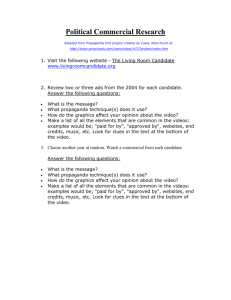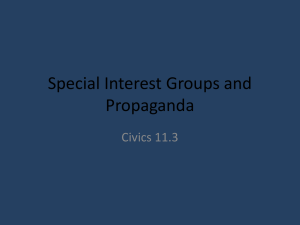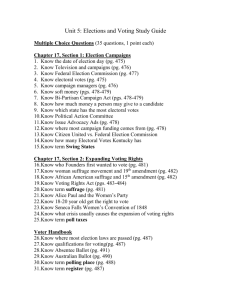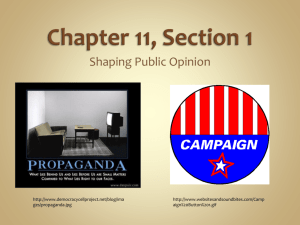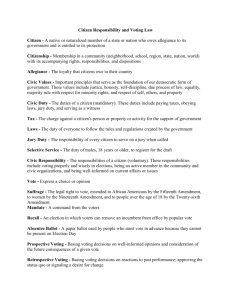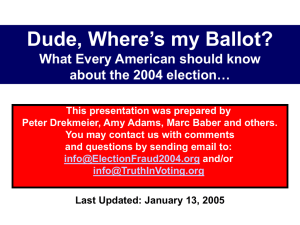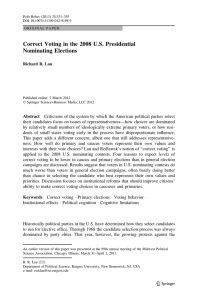Unit 5 Study Guide Section 1: Vocabulary 1) Define the following
advertisement
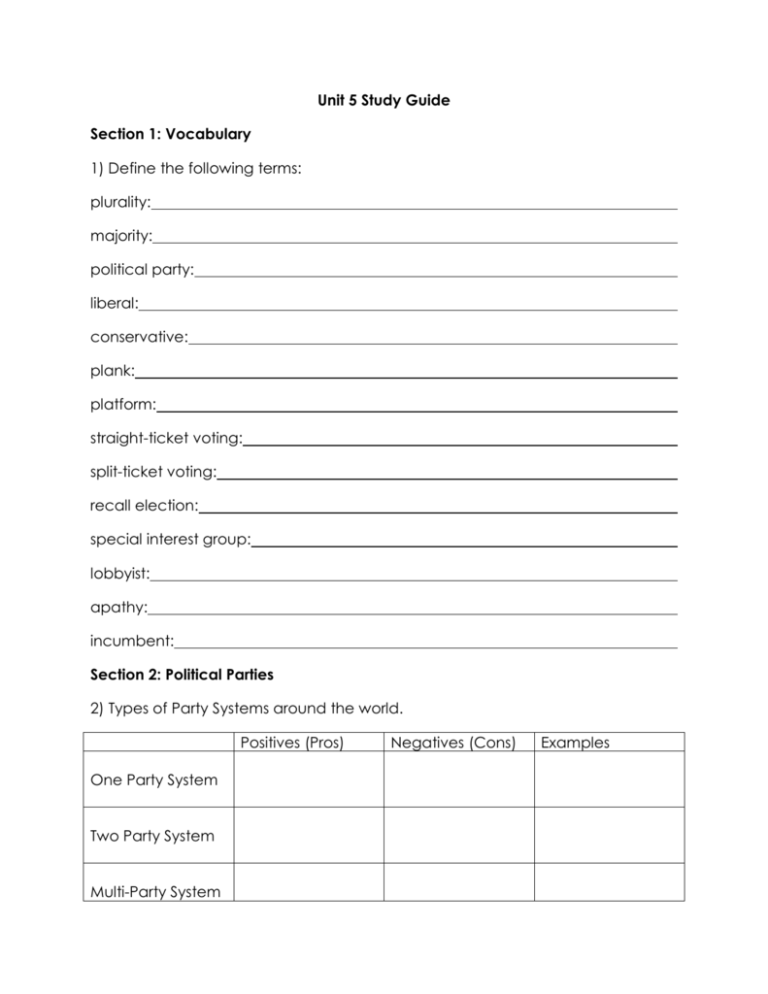
Unit 5 Study Guide Section 1: Vocabulary 1) Define the following terms: plurality: majority: political party: liberal: conservative: plank: platform: straight-ticket voting: split-ticket voting: recall election: special interest group: lobbyist: apathy: incumbent: Section 2: Political Parties 2) Types of Party Systems around the world. Positives (Pros) One Party System Two Party System Multi-Party System Negatives (Cons) Examples 3) Label the political spectrum and shade the areas in which most voters fall. 4) Name the two main political parties in America today. Determine where they fall on the political spectrum. 5) Where and how often do the two political parties created new platforms? Section 3: Voting, Elections & Campaigning 6) Name the qualifications of a voter in North Carolina. 7) Provide one reason someone would want to vote straight-ticket and one reason someone else would vote split-ticket. 8) Election Process 1. 2. 3. 9) Describe how the Electoral College works to determine the office of President. 10) What methods of campaigning are most effective in reaching the largest number of voters? Which are the least effective? 11) How can a candidate receive free advertising? 12) What advantages does an incumbent candidate have over a challenging candidate? 13) What is the purpose of public opinion polling during election campaigns? 14) Define the term propaganda. 15) Complete the following chart on forms of propaganda. Propaganda Technique Bandwagon Glittering Generalities “Just Plain Folks” Name Calling Description Example Propaganda Technique Description Example Endorsement Stacked Cards Section 4: Promoting change through political action 16) What is the fundamental difference between a political party and a special interest group? 17) How do special interest groups seek to influence elected officials? 18) What is patronage? What does it mean for those who win elections? 19) What actions can citizens take in order promote change? 20) Complete the following chart. Civic Duty Civic Responsibility Definition Example 21) What are two national organizations that promote change through volunteerism?
